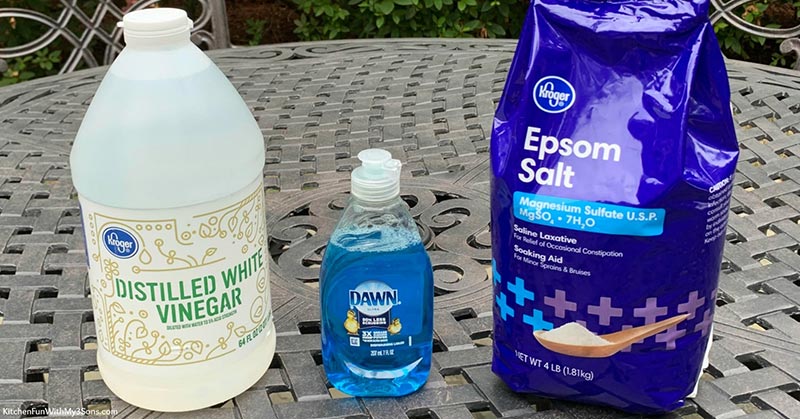Vinegar-based weed killers draw out the moisture in order to dry the weeds out, and they are effective in the case of dandelions, chickweed, Canada thistle, Buckhorn plantain, crabgrass, amaranth, Quackgrass, bindweed, and Lambsquarters. Note that vinegar is not effective in the case of plants and weeds that have a waxy coating or some other natural barrier on them.
Vinegar lowers the pH of the soil, which is the main flaw of these weed killers since they might harm the healthy plants as well. However, to avoid it, you should use tarps to hide the healthy plants, and reapply the herbicide for stubborn weeds. Also, do not use this weed killer on windy or rainy days.
Here is how to make a DIY weed killer that will be much cheaper but as effective as commercial products. It will be free of toxins and harmful chemicals, and completely safe to use.
Ingredients:
- 1-gallon white vinegar (5% acetic acid)
- 2 cups Epsom salt
- ¼ cup natural dish soap
Directions:
Pour the salt in a gallon-large container using a funnel, add vinegar, and stir well. Leave it aside for about an hour for the salt to dissolve.
Then, add the dish soap, shake well, and pour the weed killer into a spray bottle.
The dish soap is used to bind the active ingredients and their intended targets, while the acetic acid and salt dry out the leaves.
Tips:
- Spray the weed killer on sunny days as the sun will accelerate the death of weeds
- Don’t spray the grass or other plants around the weeds
- You might need to spray more times for bigger weeds, or they may need up to 24 hours to die
- Try this homemade weed killer and I bet you’ll have a pleasant gardening experience this spring!










